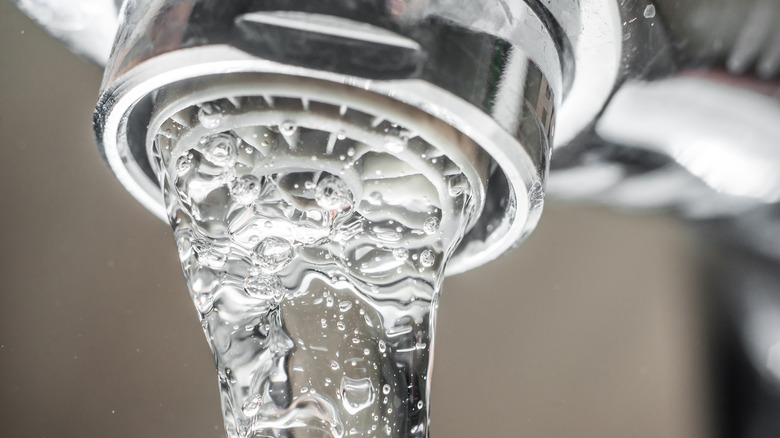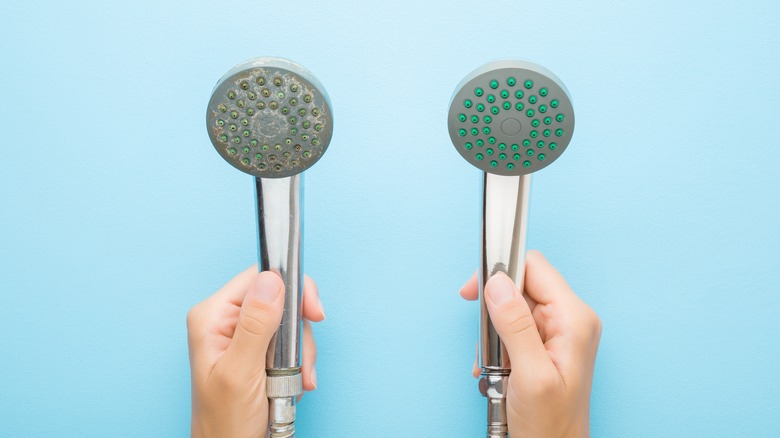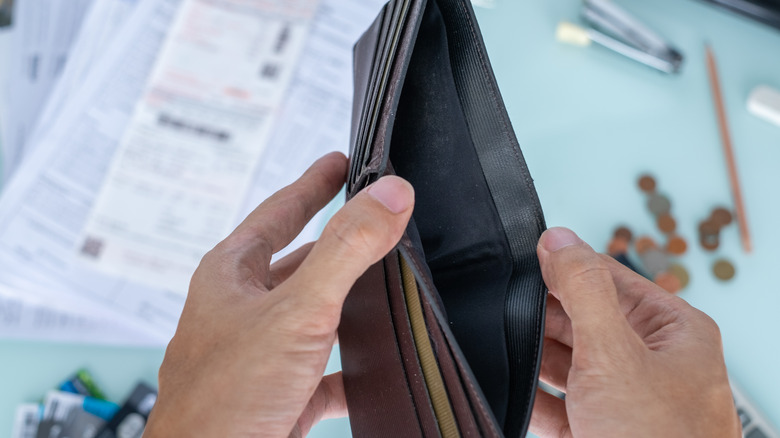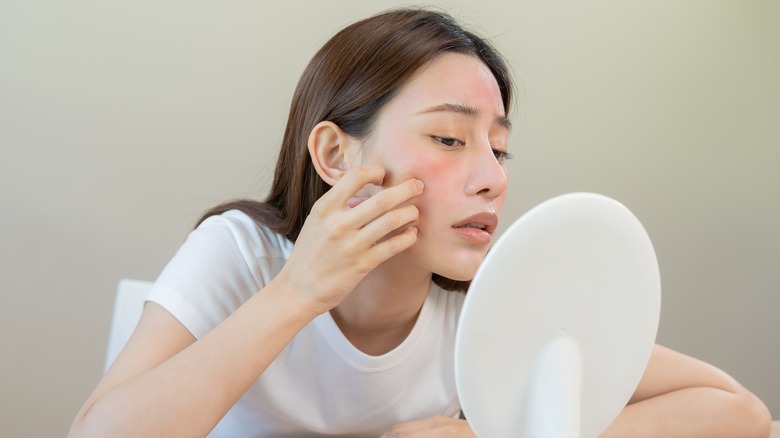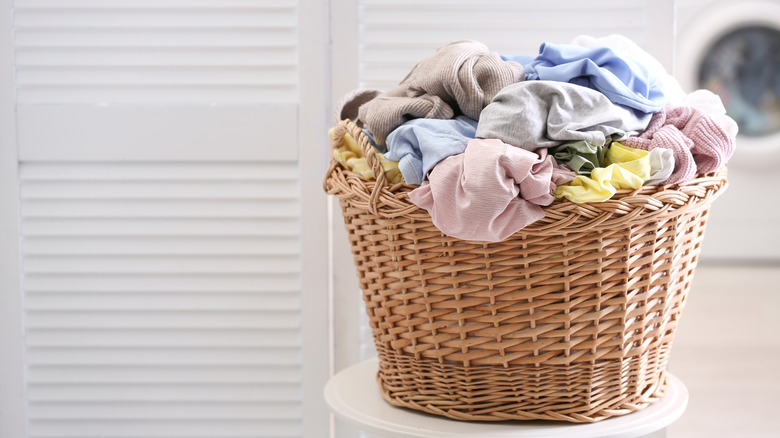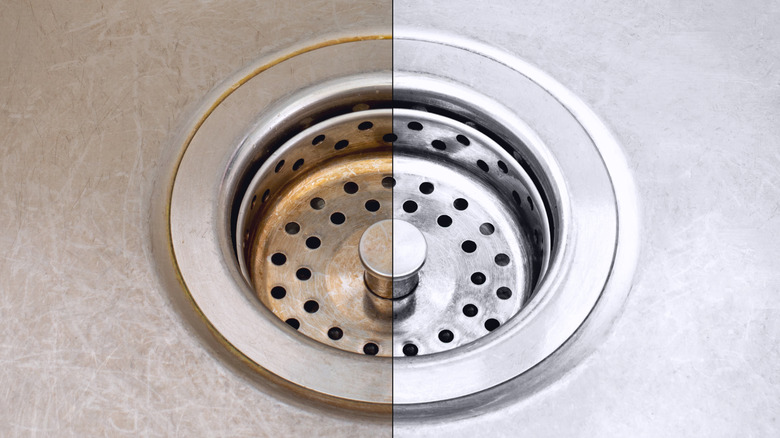5 Signs That Your Home Would Benefit From A Water Softener
Water hardness is a serious concern that homeowners all across the United States have to contend with. It may be easy to think that water from the tap is simply that — just water, but the truth is that it contains naturally occurring minerals in tiny concentrations. As a result, water all across the United States is mineralized differently. You can even check its hardness and composition with services from the U.S. Geological Survey and other sources.
The impacts of water hardness can be felt in several ways, and they may not be overwhelmingly evident until you notice them. For one thing, the taste of your water is likely different than that of another part of the country. According to HomeWater 101, the softest can be found in New England, the Southeast, and the Pacific Northwest areas. The taste is most apparent when moving to a new property because the difference in hardness can be seen most dramatically as you acclimate to a new groundwater source.
However, this isn't the only factor at play here; there are many other water hardness features that can impact how you clean your home and protect your family against potential health considerations. If you begin to notice any of these signs, the best thing to do is speak with a professional about testing your tap water for a definitive understanding of its exact makeup.
1. Limescale can quickly run out of hand
Limescale is a common sight in households and is simply the buildup of mineral deposits on appliances that see water running through them. After a while, you'll notice this accumulation on faucets, shower heads, and other taps around the home. Depending on the speed at which these deposits continue to grow, you may be dealing with significantly hardened water.
Limescale is a common problem in households, but it looks terrible when it begins to build up on your faucets and other appliances and fixtures exposed to water routinely. This accumulation can be removed with a number of specialized solutions, but a simple fix for this problem is often the application of vinegar (via Mira Showers).
Tying a watertight bag around an affected area and filling it with vinegar so that the cap or other metal component is submerged in the solution can soften any hardened deposits and simply wipe them away. This, however, is not a solution for the underlying problem, and you'll still need to solve the hard water issue that creates limescale in the first place: Softening the water coming into your home can prevent line buildup, allowing you to focus on other cleaning and maintenance tasks rather than this household annoyance.
2. Increased utility charges for water service
Limescale doesn't just affect the appearance and surface of shower heads, faucets, and other metal elements in the home. When it begins to build up on your home's amenities, there's a good chance that the appliances themselves have deposits within. Removing limescale from the exterior surfaces makes them look better; still, it does not solve a much more sinister problem that can quickly arise if you leave the underlying issue unresolved. Lime deposits within your pipes place additional pressure on incoming water facilities, which can adversely affect the amount of money you pay for your utility bill every month, according to Plumbing & Mechanical Magazine.
If you are experiencing a noticeably higher water bill that has come as a surprise, alongside other easier-to-see signs that appear in daily use and life, then there's a good chance you have a more substantial buildup of limescale throughout the home. Adding a water softener to your household can provide you with the means to defeat this issue. The device is a simple installation, but it can go a long way to making your water more palatable and reducing your monthly bills.
3. You might see dry skin and hair
Hard water deposits also affect your hair and skin, according to GQ. Homeowners that have seen a sudden change in their skin health or substantially more brittle hair may be dealing with limescale buildup and hard water deposits coming through the tap. One cause of this problem lies in the interaction between water and the soap products you use to clean yourself.
Typically, while washing your hands or taking a shower, you'll combine soap and water in an effort to scrub dirt and grime from your hands or body, as well as your hair. However, if your water source contains significant minerals, you may find that your soap won't dissolve as well as it should. This will leave a distinct film of the substance on your skin or hair. It may be so light that you don't notice it at first, but failing to wash soap completely from your body can result in a failure to completely wash oils, dirt, and other substances off as well. Again, looking to the health of your skin and hair can help you when it comes to identifying potential mineral issues in your tap water.
4. Laundry will fade quicker than before
For the same reason that the products you use to clean yourself become less effective when your tap water contains heavy minerals, the soap you use to wash your clothing also loses its level of effectiveness when used in conjunction with hard water. Clothing is a little different than the human body, though. Generally speaking, humans produce a mild scent in the same way that a dog smells distinctly dog-like (via PetMD). However, your clothing shouldn't smell of anything but the additional freshening scents that you may choose to add during your washing procedures.
On the one hand, if you are dealing with hard mineral deposits in your water, you are likely to see a faster rate of fading in the color pigmentation of your clothing. However, a much more rapid change will occur in the scent, according to Calgon: Hard water won't allow the soap to do its job properly, leaving behind musty or even sweaty smells across clothing washed in this soap solution and unfavorable water.
5. Stains in the sink or other areas
In the same way that you'll begin to see hardened deposits on faucets and elsewhere if your water contains too much minerality, you will also notice scaly or scummy buildup at the bottom of your sink, bathtub, and anywhere else that water might stand. These stains can be white and filmy, pink and grimy, or anywhere in between. It really all depends on the unique mix of metal and mineral deposits running through your tap. This buildup is a sure sign that you're dealing with hard water and that the inclusion of a softener is warranted on your property.
Strategies for removing this buildup are similar to those surrounding taps, shower heads, and other metal surfaces that may be affected by limescale buildup. Using vinegar or bleach and a powdered detergent solution will soften these deposits and allow you to scrub them away. Taste of Home also notes that baking soda or borax can be effective on tough sink stains.
All of these signs suggest that you may be experiencing high levels of hard water deposits in this key resource flowing into your home. However, installing a water softener is simple and can make your property feel more comfortable and your water taste much better.
